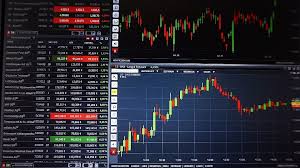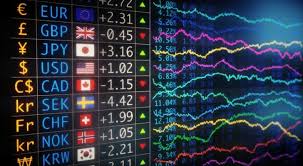Mastering Forex Day Trading Strategy for Maximum Profit 1955223110

Mastering Forex Day Trading Strategy for Maximum Profit
Day trading in the Forex market can be an exhilarating experience, offering plenty of opportunities for profit. With the right strategies and tools, traders can navigate the complexities of Forex and improve their chances of success. In this article, we will explore effective Forex day trading strategies, essential tips, and various techniques you can implement to take your trading to the next level. With insights drawn from experts and practical advice, this guide aims to equip you with the knowledge necessary to thrive in the Forex trading environment. Additionally, if you’re interested in diversifying your trading skills, check out forex day trading strategy Crypto Trading Asia for valuable resources on cryptocurrency trading.
Understanding Forex Day Trading
Forex day trading involves the buying and selling of currency pairs within the same trading day. Unlike long-term investors who may hold positions for weeks or months, day traders capitalize on short-term price movements, aiming to make small, frequent profits. This strategy requires a deep understanding of market dynamics, technical analysis, and a disciplined approach to risk management.
The Importance of a Trading Plan
A comprehensive trading plan is crucial for any successful day trader. It serves as a roadmap that guides traders through their decision-making process. A well-structured trading plan includes the following components:
- Trading Goals: Define clear, achievable goals that outline what you want to accomplish with your trading.
- Risk Tolerance: Establish your risk tolerance, determining how much capital you are willing to risk on each trade.
- Entry and Exit Strategies: Clearly outline your criteria for entering and exiting trades, focusing on technical indicators or patterns.
- Review and Adjust: Periodically review your trading performance and adjust your strategies as necessary.
Technical Analysis for Day Trading
Technical analysis plays a pivotal role in day trading, as it helps traders make informed decisions based on price movements and market trends. Here are some key tools and techniques used in technical analysis:
1. Charts and Patterns

Charts are essential for visualizing price movements over time. Day traders commonly use candlestick charts, which provide details on opening, closing, high, and low prices. Identifying patterns, such as head and shoulders, triangles, or flags can help traders predict future price movements.
2. Indicators and Oscillators
Indicators, such as the Moving Average (MA), Relative Strength Index (RSI), and MACD (Moving Average Convergence Divergence), provide additional context for price movements. These tools help day traders identify trends, market momentum, and potential reversal points. Understanding how to effectively interpret these indicators is crucial.
3. Support and Resistance Levels
Support and resistance levels are essential concepts in Forex trading. Support levels indicate prices where bulls enter aggressively to boost price, while resistance levels highlight price points where selling pressure emerges. Recognizing these levels can help traders decide when to enter or exit a position.
Effective Forex Day Trading Strategies
Implementing specific strategies can enhance your day trading success. Here are some proven strategies that traders commonly utilize:
1. Scalping
Scalping is a short-term strategy where traders aim to make small profits by executing a high volume of trades within a short time frame. Traders look for currency pairs that exhibit tight spreads and quick movements. The key here is to capitalize on small price fluctuations.
2. Momentum Trading

This strategy involves trading on the momentum of price movements. Traders look for strong trends and enter trades in the direction of that trend. They often use momentum indicators to confirm their decisions, aiming to close trades when the momentum shows signs of reversal.
3. Breakout Trading
Breakout trading focuses on entering trades when the price breaks through established support or resistance levels. This strategy requires careful monitoring of chart patterns, and traders aim to capitalize on the increased volatility that results from a breakout.
4. Range Trading
In range trading, traders identify high/low price levels and make trades based on the expectation that the price will bounce off these levels. This strategy works well in markets that lack strong trends, where price movements oscillate between established boundaries.
Risk Management in Forex Day Trading
Effective risk management is critical for long-term success in day trading. Without proper risk management, traders expose themselves to substantial losses. Here are some fundamental principles:
- Use Stop-Loss Orders: A stop-loss order limits potential losses by automatically closing a trade at a predetermined price level.
- Risk Only a Small Percentage: Many traders recommend risking no more than 1-2% of your trading capital on a single trade.
- Maintain a Balanced Portfolio: Diversify your trading strategies and currency pairs to minimize risk exposure.
- Stay Disciplined: Resist the temptation to overtrade or deviate from your trading plan, even in volatile markets.
Conclusion
Forex day trading can be a lucrative endeavor when approached with the right strategies and a solid trading plan. By mastering technical analysis, employing effective trading strategies, and maintaining strict risk management, traders can enhance their potential for success. Remember that consistent practice and learning from both wins and losses are vital components of becoming a successful day trader. Whether you are just starting or looking to refine your skills, embracing a disciplined approach will lead you to greater profitability in the Forex market.


